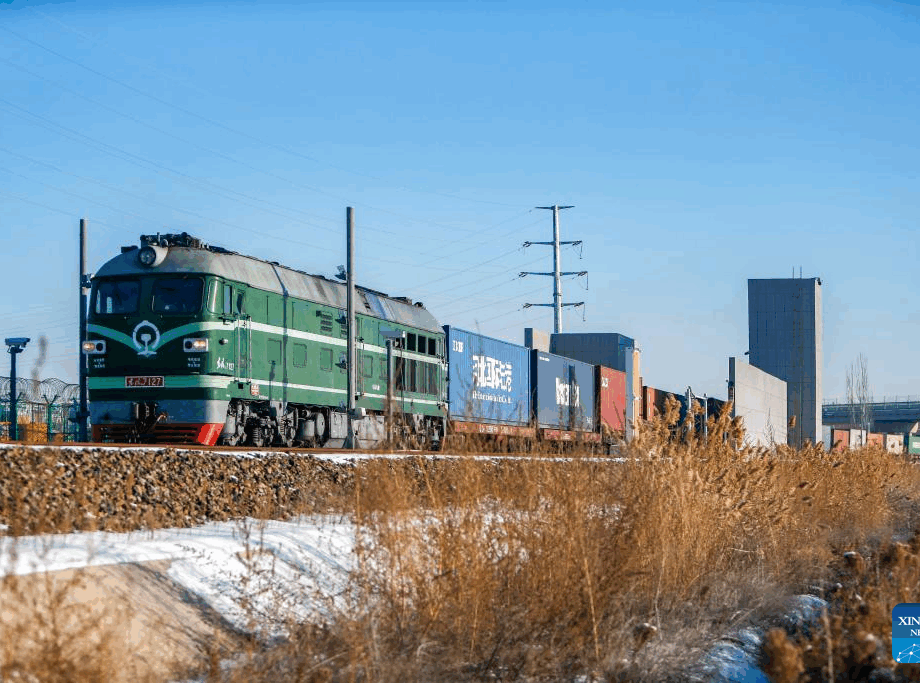A New Push to Bypass the Seas
China is racing to build reliable overland trade routes to Europe that avoid crowded sea lanes and political chokepoints. The strategy has moved from long term ambition to urgent priority after a series of shocks: tariff tensions with the United States, pandemic era port backlogs, war in Ukraine, and attacks on commercial shipping in the Red Sea. The plan ties into the Belt and Road Initiative, a decade long push to connect factories in China with buyers across Eurasia through rail lines, highways, and inland ports.
- A New Push to Bypass the Seas
- Chongqing Emerges as the Inland Mega Hub
- What the Middle Corridor Promises
- Costs, Customs, and Bottlenecks
- New Links in Central Asia and Iran
- Europe, Turkey, and the United States Calculate the Stakes
- What Faster Rail Means for Shippers
- Risks That Could Slow the ‘Land Suez’
- Key Points
Sea trade still carries the bulk of China Europe goods. It is cheap, but it can take 30 to 45 days from factory to European warehouse and depends on narrow passages such as the Suez Canal, the Strait of Malacca, and the Strait of Hormuz. Beijing wants alternatives that are faster than ships and far less expensive than air freight. That is where new rail corridors and inland logistics hubs come in.
Recent events have underlined the risk of relying on routes that rivals can influence. The Russian invasion of Ukraine disrupted the dominant overland rail path across Russia and Belarus. Analysts say traffic on that corridor fell sharply after 2022, while isolated seizures of Chinese cargo in 2023 highlighted transit risk. Trade through Russia still matters, and China Russia commerce was reported at about 240 billion euros in 2024, yet many shippers now look for routes that do not depend on Moscow or on vulnerable sea lanes.
Chongqing Emerges as the Inland Mega Hub
In this realignment, the mountainous megacity of Chongqing has become the flagship inland gateway. It sits at the heart of a thick web of rail lines tying Western China to Central Asia and Europe, and south to Southeast Asia. The city handles hundreds of trains and truck to train transfers daily, linking origins such as Vietnam and Singapore to destinations in Germany, Poland, and other European markets. Rail delivery can be 10 to 20 days faster than shipping by sea on the same lanes, a saving that matters for seasonal goods and electronics.
Chongqing is more than a transit point. It is a production base that makes about one third of the world’s laptops, a growing hub for electric vehicles, and an export center for a large share of China’s car shipments. That combination of manufacturing scale and inland logistics has turned the city into a testing ground for a new model of trade: build closer to Europe’s rail links, then send goods quickly by land instead of waiting on ships.
The scale of China Europe rail is no longer experimental. In a milestone reported in late 2024, the one hundred thousandth China Europe freight train departed from Chongqing for Duisburg in Germany. Since the service began in 2011, rail operators say they have moved more than 11 million containers with goods worth over 420 billion United States dollars. The network now reaches 227 cities in 25 European countries and more than 100 cities across 11 Asian countries. Product mix has widened from basic electronics to higher value items such as new energy vehicles, lithium batteries, and solar components.
Chinese state media has framed the network as an anchor of continental trade. In its coverage, Xinhua called the service a stabilizer in a volatile period for global logistics.
It is a vital stabilizer for Asia Europe trade and economic ties.
What the Middle Corridor Promises
To keep trains moving without crossing Russia, Beijing and its partners are advancing the Middle Corridor, also known as the Trans Caspian International Transport Route. The path runs from China into Kazakhstan, across the Caspian Sea by ferry, through Azerbaijan and Georgia to Turkey, and then into the European Union. It bypasses both Russia and Iran. The corridor is multi modal, which means containers shift between rail and sea several times, yet the total journey can still be much quicker than ocean shipping.
Estimates for travel time differ, and they depend on season, port congestion, and customs performance. Some studies project best case journeys of close to two weeks. Others put current door to door times at roughly 19 to 25 days for typical cargo. Either way, the route offers a path that is faster than sea and avoids the political and insurance risks that have dogged other options.
Momentum is visible in the numbers. A Lowy Institute analysis tracking the corridor’s growth noted both the sharp decline in rail cargo via Russia and a striking build up along the southern bypass. Before the war in Ukraine, the Russian dominated line carried more than 90 percent of rail cargo between Europe and the Far East. That share has dropped, and traffic on the Middle Corridor rose from 350 thousand tons in 2020 to 3.2 million tons in 2022, with further gains reported since then as countries upgrade ports and rail yards.
As the Lowy Institute put it in a 2023 brief:
The Middle Corridor could reduce transit time between China and Europe to 12 days, compared to 19 days via the overland Russian dominated Northern Corridor or 22 to 37 days by sea.
Governments along the route are investing to unlock capacity. Azerbaijan plans to expand the Baku International Sea Port. Georgia has revived plans for a deep sea port at Anaklia on the Black Sea. Kazakhstan aims to create a large container hub and multi function terminals, while China has built a major transshipment complex on the border that speeds handoffs between rail gauges. Turkey, the bridge into Europe, is adding track, upgrading tunnels, and coordinating schedules to ease bottlenecks around Istanbul.
Costs, Customs, and Bottlenecks
The Middle Corridor still faces hard limits. Costs per container are often higher than on the older northern route, and repeated transfers between train and ferry add time. A 2022 assessment by the Jamestown Foundation put delivery costs at about 5,000 euros per standard container through the Middle Corridor, compared with roughly 2,467 euros via Russia and Belarus. Capacity is thin as well. By some estimates the corridor handled only 2 to 3 percent of the tonnage that once moved on the northern line.
Soft infrastructure can be as constraining as tracks and cranes. Border controls remain slow and unpredictable in parts of Central Asia, which adds informal fees and paperwork delays. Customs systems are not fully aligned, data exchange is limited, and rules differ across jurisdictions. Digital tools that allow pre clearance and real time tracking are expanding, but not yet universal. At sea, the Caspian leg is a known choke point, since ferry and port capacity is still catching up to demand. On land, single track lines and tight slots in Turkey’s busiest areas restrict throughput at peak hours.
Jamestown’s conclusion stressed that the corridor is valuable even if it does not replace the Russian route.
While the Middle Corridor cannot fully replace the Northern Corridor in the near term, it could become an important complementary route for transcontinental trade.
Subsidy policy matters too. Many Belt and Road rail services grew quickly on the back of local and national subsidies that closed the gap between rail and sea shipping. Those subsidies have been trimmed or refocused in some places. If incentives do not cover the price difference, some shippers will continue to favor the slower but cheaper sea option for heavy, low margin goods.
New Links in Central Asia and Iran
To widen its options, China is also pushing new lines that feed into the Middle Corridor or create parallel paths. After almost three decades of discussion, construction has begun on key tunnels for the China Kyrgyzstan Uzbekistan railway. When finished, this link will shorten the distance from Western China to Central Asia and reduce reliance on routes that touch Russian territory. It will also give shippers another entry point into the Trans Caspian system.
A separate rail corridor is taking shape between China and Iran. The first cargo train from Xi’an to a dry port near Tehran arrived after a journey of about 10,400 kilometers. Iranian and Chinese officials say the service can cut transit times to roughly 15 days compared with around 30 days by sea. Railway agencies from six countries, including Turkey and Kazakhstan, have agreed to work on tariffs and schedules so that freight can continue westward toward Europe. The project reflects deeper ties between Beijing and Tehran, including a long horizon cooperation deal, and it offers Iran a land route to keep trade flowing despite sanctions.
The corridor through Iran also illustrates how geopolitics shapes logistics. Regional tensions and recent military strikes have created an unstable environment, and any escalation can disrupt rail schedules or insurance coverage. Rival plans, such as Russia’s North South Transport Corridor through Iran to the Indian Ocean, add competitive pressure for resources and attention.
Europe, Turkey, and the United States Calculate the Stakes
European governments support diversification of supply routes for economic and security reasons. The Middle Corridor aligns with the European Union’s Global Gateway strategy, which backs infrastructure that reduces dependence on single suppliers and single transit states. For Europe’s manufacturers and retailers, a resilient land bridge offers an alternative when maritime lanes are slow or risky.
Turkey has made trade connectivity a national priority since the 1990s, and its geography gives it leverage. With upgrades on the Baku Tbilisi Kars railway and projects across Anatolia, Ankara positions itself as a transit hub between Central Asia and the European Union. Azerbaijan and Kazakhstan see similar opportunities to become logistics platforms, while also marketing access to Central Asia’s energy and minerals, including rare earth elements that are critical for technology and defense.
Policy voices in Washington argue the United States should engage more in Central Asia, both to support partners and to shape standards along a corridor where Russia, China, and Iran also compete for influence. An Atlantic Council review captured how governments now view transport networks as tools of statecraft. The authors also highlighted projections for the corridor’s potential.
The World Bank projects that by 2030, the corridor could triple freight volumes and increase China EU trade by 30 percent.
The same review described the Middle Corridor as a crossroads of peace. Backers say routes that move goods, information, and people can reinforce habits of cooperation. Skeptics caution that commercial projects alone do not resolve the many political disputes that crisscross the region. The reality is that trade follows stability, and stability depends on coherent policy and patient investment.
What Faster Rail Means for Shippers
For shippers, the decision is a classic trade off between cost, time, and risk. Sea freight remains the cheapest option for bulky goods with low urgency. Air cargo is the fastest and most expensive choice. Rail across Eurasia sits in the middle. Typical container journeys by rail are measured in weeks rather than days or months. Prices are higher than ocean shipping but can be offset by lower inventory costs, faster cash cycles, and fewer stockouts on fast moving products.
Electronics, auto parts, fashion, and consumer goods are already common on China Europe trains. Xinhua’s data show a rapid shift to higher value cargo, including new energy vehicles, batteries, and solar equipment. The arrival of an ASEAN Express train to Poland via Chongqing cut routes by several days, shaping new patterns for suppliers in Vietnam and other Southeast Asian economies that plug into China’s inland rail grid. European destinations such as Duisburg, a major inland port and logistics hub, have built facilities to handle the flow and distribute goods across the continent.
Service reliability is the next competitive frontier. Customs pre clearance, unified digital manifests, and guaranteed ferry slots on the Caspian can reduce variability. Investments in passing loops, double tracking, and terminal equipment add resilience during surges. If operators can keep transit times to around two to three weeks with predictable handoffs, the pool of products that make sense on rail will expand.
Risks That Could Slow the ‘Land Suez’
None of the new routes is risk free. Weather on the Caspian can stop ferries. Border rules can change with little notice. Funding models that rely on subsidies can be cut during budget stress. Cyber attacks on rail networks and port systems are a growing concern. Conflicts in nearby regions can spill into transport corridors through sanctions, sabotage, or forced inspections. The scale gap with sea freight is also large. Global container ships move hundreds of times more cargo than current rail capacity, which means rail will complement, not replace, ocean trade.
Mitigation steps are clear. Expand port capacity on both shores of the Caspian, speed up customs with shared data platforms, and coordinate schedules so that trains do not wait for ferries. Build out double track segments in Turkey and the South Caucasus. Finish connectors such as the China Kyrgyzstan Uzbekistan line, and increase rolling stock dedicated to cross border service. Apply common service standards and transparent tariffs so that shippers can plan with confidence.
Key Points
- China is building overland trade paths to Europe to reduce exposure to sea chokepoints and geopolitical shocks.
- Chongqing has emerged as a major inland hub, combining large scale manufacturing with fast rail links to Europe and Southeast Asia.
- China Europe freight trains surpassed one hundred thousand trips, with networks covering 227 cities in Europe and more than 100 in Asia.
- The Middle Corridor via Kazakhstan, the Caspian Sea, Azerbaijan, Georgia, and Turkey bypasses Russia and Iran and can cut transit times to weeks rather than a month or more by sea.
- Costs, customs delays, and limited capacity remain challenges, including the Caspian Sea crossing and bottlenecks in Turkey.
- New projects, such as the China Kyrgyzstan Uzbekistan railway and a China Iran corridor, add options but bring political risk.
- Europe supports diversification through the Global Gateway strategy, Turkey seeks a larger transit role, and analysts see scope for freight to triple by 2030.
- Rail offers a middle ground between sea and air for higher value goods, and service reliability will determine broader adoption.
- Weather, policy changes, funding, cyber threats, and conflicts could disrupt progress, so rail is set to complement, not replace, sea trade.




